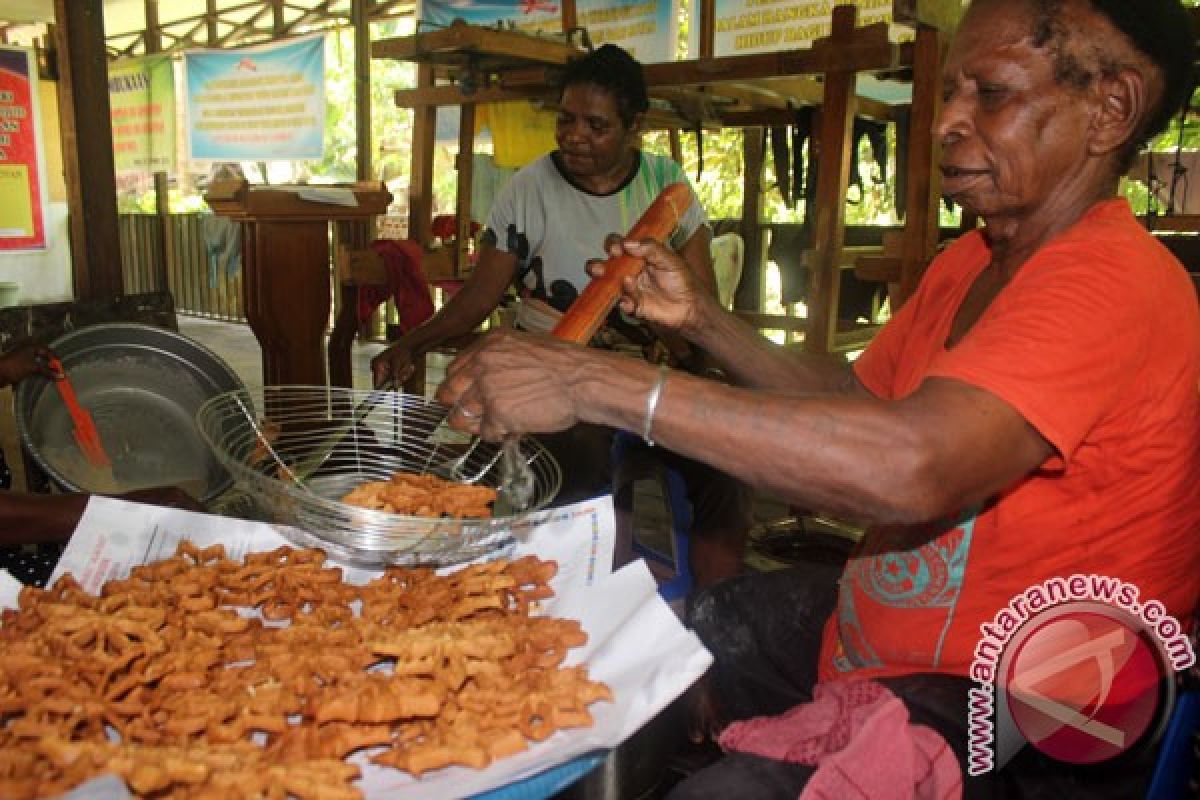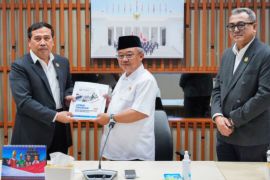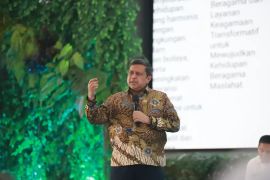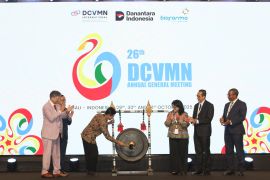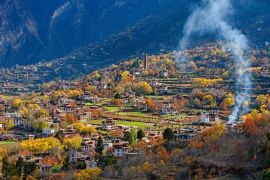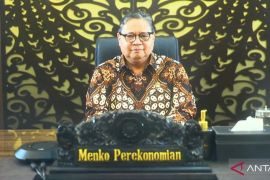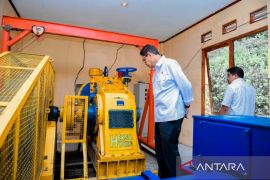Sago palm is also an important food source for the people of Papua, Maluku, and Sulawesi, in addition to tubers which are consumed based on area of living.
Besides its importance and high wild productivity, the sago has
a high content of carbohydrate that could support food security in Papua, and Indonesia in general.
When sago is developed properly to support the food security in the country, the government will not have to promote the cultivation and distribution of rice to support and feed the locals.
Hence, the National Resilience Council (Wantanas) is now making every effort to develop Papua`s natural resource potential to support the local to national food security.
When receiving the Wantanas officials at his office in Jayapura on Monday, Papua Governor Lukas Enembe remarked that the development of sago and coffee in Papua, known as the "Land of Cenderawasih," became the concern of Wantanas to improve the economic sector of the local community.
The governor noted that it was necessary to develop sago in Papua because it is a community need as a food ingredient, while coffee has a huge potential in the local economy.
However, Enembe said the development of sago and coffee in Papua needs to be accompanied by the qualified human resources in its processing.
"For this reason, assistance is needed for human resources in Papua to be able to process and develop sago and coffee in the future," the governor said.
The officials of National Resilience Council visited Papua to find out the existing natural potentials, including sago, to be developed into supporting food security for local communities, and promoting diversification of food to reduce the dependence on rice.
Promoting the diversification of food will make the public realize that they have many other staple foods, such as cassava, corn, tubers, and sago, in place of rice, to assure their food security.
Recent research indicated that when sago is grown under organized farming practices, it has a potential yield of 10-15 metric tons of dried starch per hectare per year.
This starch yield per hectare is approximately three to four times higher than that of rice, and that means sago can play an important role in promoting food security.
In addition to Papua, the people of Konawe district in the Indonesian province of Southeast Sulawesi had turned to sago as their favorite culinary delights.
In Konawe district, sago palm also provides strong economic, cultural and environmental advantages in rural areas where it is grown.
Because sago has become a favorite culinary, of course the need of this staple diet will be even greater, so the people who have sago plant land were encouraged to maintained it and do not replace it with other plants.
Sago palm can grow in swamps and wet land which are not suitable for agricultural production. It is tolerant to drought and floods. It increases farm household income and employment through the production of confectionery and cookies, roofing material from leaves and the production of woven mats and handicrafts.
The Sago worm cultured from old sego trunks is a local delicacy with high market value. Additionally it contributes to slowing the pace of global warming through its year-round carbon dioxide absorbing function.
Hence, the people should not damage the existing crops or sago forests, because it is a promising source of income amid the decrease of sago land.
Last year, the Konawe district government provided sago management equipment for the community groups in order to develop the welfare of sago plant owners.
In order for residents to process sago no longer in the traditional way, there was a kind of small-scale processing plant in the district.
The potential of local food from sago like sinonggi, can be used as a local commodity and could be a business to improve the economy of the community.
Hence, the Konawe district government is also focusing on the development of sago cultivation to save the plant from being extinct.
Sago is one of the staple foods in some districts in Southeast Sulawesi that is increasingly threatened with extinction, so public awareness needs to be raised to save the sago plant in order to remain sustainable.
Therefore, the local community has been called on to preserve sago fores in a sustainable manner because it is a food reserve for them.
Sago is the staple food of the people of Konawe since time immemorial. Even without rice, the people there can consume sago for survival.
Therefore, the local people had been encouraged to preserve sago forest, and do not destroy it for agriculture and other development interests.
Sago plants not only serve as food reserve, but also protect the water source for the life of the local community in general.
In light of this, the indigenous people of Papua, Maluku, and Sulawesi can unite to reject irresponsible parties who want to turn sago forests into oil palm plantation.
Sago can be a solution to make Indonesia self-sufficient in staple foods, because it does not require a large plot of land and is able to grow without any intensive care.
Sago has a high carbohydrate content and is easy to digest, and of better quality compared to rice.
Editing by INE
Reporter: Otniel Tamindael
Editor: Otniel Tamindael
Copyright © ANTARA 2018
